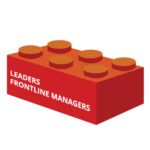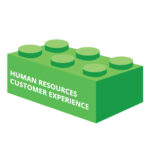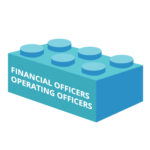High potential executives aren’t just born, they’re made.
The most successful business leaders don’t leave professional growth to chance. They continuously invest in themselves, often with the help of tools like personality assessments.
Whether it’s Myers-Briggs, StrengthsFinder, Enneagram – or the color wheel personality styles – these tools offer insights that help leaders improve how they collaborate, communicate, and lead.
One of the most popular personality models is the Success Insights Wheel®, commonly called the color wheel personality test.
Designed by Target Training International, the color wheel measures how individuals approach challenges, people, rules, and environments. Executive coach Jeannie Murphy frequently recommends the color wheel to clients because of its simplicity and practical application.
“Your color is helpful because it is not fixed. It evolves as you mature—and you can choose to change it. That’s the power of the wheel. Like a chameleon, you can adapt based on who you’re working with and what’s needed.”
– Jeannie Murphy
Understanding your own style, and learning to recognize others’, is one of the most valuable skills any executive can cultivate.
The Four Color Wheel Personality Styles
Here’s a quick overview of each style and how the styles show up in leadership:
Red: Dominant & Task-Focused
Reds are intense, action-oriented, and focused on results. They move quickly, often before the details are worked out, and prefer direct, efficient communication. In leadership, reds frequently excel in sales or front-line management roles where decisiveness and energy drive success.

Sales leaders and front-line managers are often red.
Yellow: Personable & Visionary
Yellows are engaging, optimistic, and big-picture thinkers. You’ll spot them easily—they’re expressive, social, and natural relationship builders. Many CEOs and CMOs lean yellow, thriving in roles where vision and charisma matter. However, details may not be their strong suit.

Yellow personalities frequently fill CEO and Chief Marketing Officer roles.
Green: Loyal & Steady
Greens are dependable, patient, and deeply loyal. They don’t seek the spotlight, but their contributions are essential. They value harmony and prefer to work behind the scenes, often found in HR, customer experience, or team-building leadership positions. Greens shine when they feel heard and supported.

Green personalities gravitate toward positions like Chief Human Resources Officer or customer experience — places where they can put their nurturing tendencies to work.
Blue: Analytical & Precise
Blues are all about precision, details, and quality. They ask tough questions to make sure no stone is left unturned. Blues often find themselves in operations, finance, or compliance roles—places where accuracy is non-negotiable. They may seem reserved, but their insights are invaluable.

Blue personalities are typically found in finance, operations, and logistics — jobs where the details count: Chief Financial Officers, Chief Operating Officers, or Presidents, and also in compliance roles.
Why Knowing Your Color (and Showing It) Matters
At its core, the color wheel personality styles framework is about adaptability. Effective leaders don’t just lead from their default style—they flex, depending on who they’re working with.
Let’s say you’re a visionary yellow leading a team of meticulous blues. Understanding that your energy needs to be balanced with clear, detailed communication can make the difference between ideas that fizzle and initiatives that fly.
But there’s another side to leadership growth that often gets overlooked: visibility.
No matter your personality style, it’s not enough to develop your leadership behind closed doors. Your expertise, strengths, and leadership style need to be seen – by your peers, your network, and decision-makers.
That’s where your online presence comes in.
A strong, intentional LinkedIn profile doesn’t just list your experience. It reflects your leadership style, your expertise, and yes—even your personality. Whether you’re a bold red, a charismatic yellow, a steady green, or a precise blue, your profile should clearly communicate what makes you effective and unique.
We help high-potential leaders translate their strengths into a LinkedIn presence that opens doors
If you’re ready to make sure your personality—and leadership—are showing up where it counts, explore our LinkedIn personal branding services.

